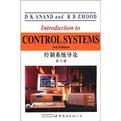控制系统导论
出版时间:2000-6 出版社:北京世图 作者:D. K. Anand, R.B. Zmood 页数:730
内容概要
本书初版于1974年,再版于1984年,自80年代以来,由于计算机辅助设计软件的应用已成为控制系统分析与设计研究的重要手段。因此,作者对第二版内容作了彻底修改、扩充和更新。在强调计算机应用的同时,第三版仍保留了许多经典的解析和图形技术。在最初的几章里,强调了控制系统的概念,仔细分析了有代表性的传函和状态方程。在反馈控制的讨论中,引人鲁棒这一概念来研究参数的变化对系统行为的影响。新增添的两章阐述了控制策略和自适应控制。另外,新版还对控制系统设计、离散控制和非线性控制系统等内容做了扩充。 目次:导论;物理系统建模;控制系统模型;时钟反馈的经典方法;时钟反馈的状态方程;性能标准;稳定性评估和性能评估;控制策略和设备比较;系统补偿;离散时钟控制系统;非线性控制系统;系统和随机输入;自适应控制系统。 读者对象:机械和自动控制专业师生和工程技术人员。
作者简介
Dr D. K. Anand is both a Professor and Chairman of the Department of Mechanical Engineering at the University of Maryland, College Park,Maryland, U.S.A. He is a registered Professional Engineer in Maryland and has consulted widely in Systems Analysis for the U.S. Government and Industry. He has served as Senior Staff at the Applied Physics Laboratory of the John Hopkins University and Director of Mechanical Systems at the National Science Foundation. Dr Anand has published over one hundred and fifty papers in technical journals and conference Proceedings and has published two othe books on Introductory Engineering. As well he has a patent on Heat Pipe Control. He is a member of Tau Beta Pi, Pi Tau Sigma, Sigma Xi, and is a Fellow of ASME.
书籍目录
1 Introduction 1.1 Historical Perspective 1.2 Basic Concepts 1.3 Systems Description 1.4 Design, Modeling, and Analysis 1.5 Text Outline2 Modeling of Physical Systems 2.1 Introduction 2.2 Mechanical Systems 2.3 Electrical Systems 2.4 Electromechanical Systems 2.5 Thermal Systems 2.6 Hydraulic Systems 2.7 System Components 2.8 Summary 2.9 References 2.10 Problems3 Models for Control Systems 3.1 Introduction 3.2 System Impulse and Step Responses 3.3 The Transfer Function 3.4 Differential Equation Representation 3.5 Block Diagram Analysis 3.6 State Equation Representation 3.7 Relationship Between System Representations 3.8 Small Disturbance of Nonlinear Systems 3.9 Summary 3.10 References 3.11 Problems4 Time Response - Classical Method 4.1 Introduction 4.2 Transient Response 4.3 Steady State Response 4.4 Response to Periodic Inputs 4.5 Approximate Transient Response 4.6 Summary 4.7 References 4.8 Problems5 Time Response - State Equation Method 5.1 Introduction 5.2 Solution of the State Equation 5.3 Eigenvalues of Matrix A and Stability 5.4 Two Examples 5.5 Controllability and Observability 5.6 Summary 5.7 References 5.8 Problems6 Performance Criteria 6.1 Introduction 6.2 Control System Specification 6.3 Dynamic Performance Indices 6.4 Steady State Performance 6.5 Sensitivity Functions and Robustness 6.6 Summary 6.7 References 6.8 Problems7 Assessing Stability and Performance 7.1 Introduction 7.2 Stability via Routh-Hurwitz Criterion 7.3 Frequency Response Method 7.4 Root Locus Method 7.5 Dynamic Response Performance Measures 7.6 Summary 7.7 References 7.8 Problems8 Control Strategies and Plant Sizing 9 System Compensation 10 Discrete Time Control Systems11 Non Linear Control Systems 12 Systems with Stochastic Inputs 13 Adaptive Control SystemsA Laplace and Z-TransformsB Symbols,Units and Analogous SystemsC Fundamentals of Matrix Theory D Computer Software for Control Index
图书封面
评论、评分、阅读与下载
用户评论 (总计0条)
推荐图书
- 电子商务网站建设
- 信号与系统解题指南
- 人工神经网络与模糊信号处理
- 精通Palm OS程序设计
- Microsoft Exchange 2000 Server系统实务经典
- C#案例开发
- 二级Visual Basic程序设计
- 微积分习题集
- 信息处理数学基础
- 用 Access 2000 和 Visual FoxPro 6.0 管理公司和个人数据
- 实用微积分同步教练
- 微积分
- 数字逻辑基础
- 高等数学习题课30讲
- 数值分析(修订版)
- 常微分方程
- 分形
- 工科研究生应用数学基础
- 高等数学实验课
- 数学分析(下册)
- 离散数学
- Fireworks 4.0网页图像制作技巧与实例
- 数学分析讲义.上
- 高等数学附册习题分析与解答
- 高等几何
